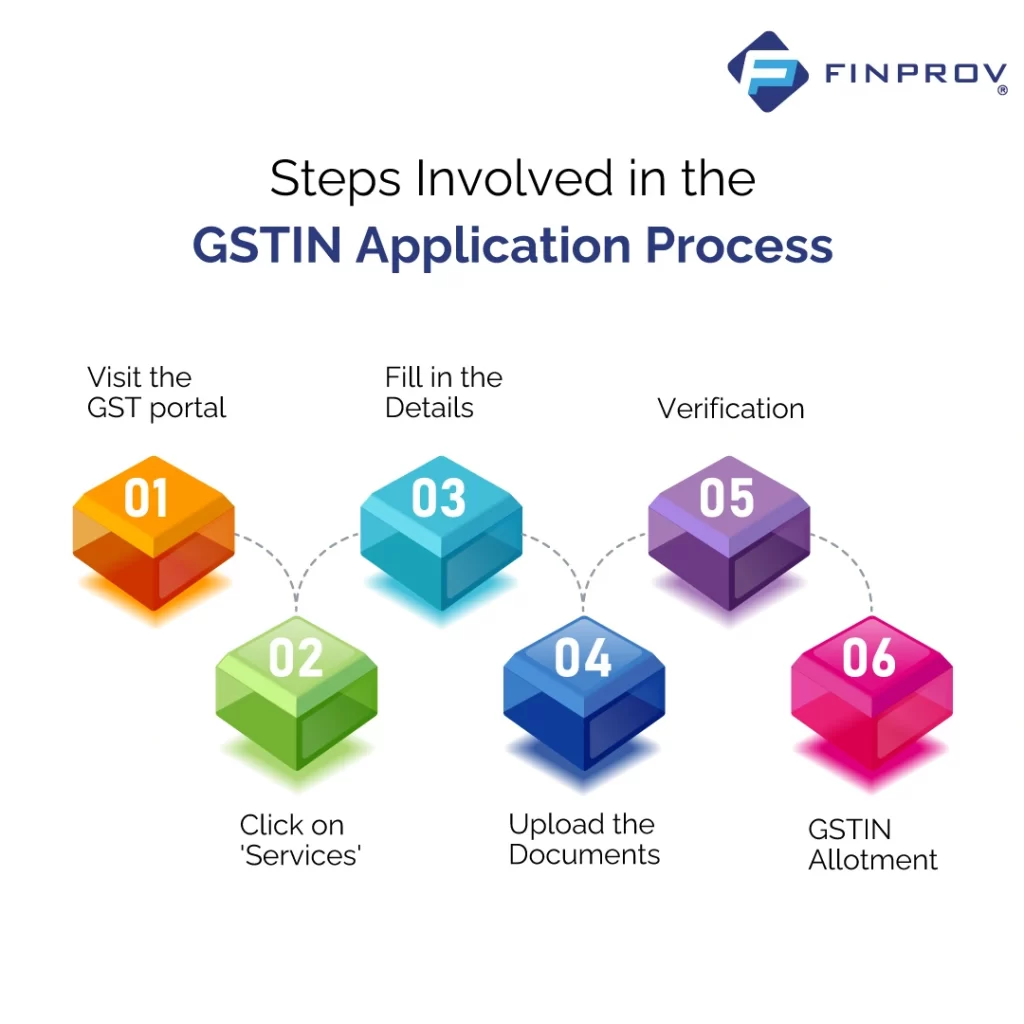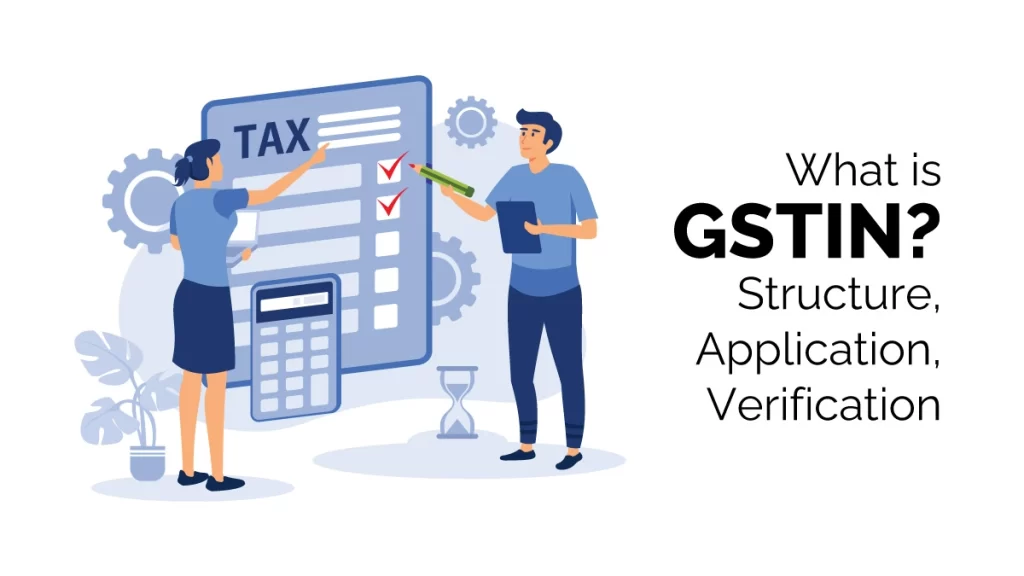What is GSTIN, and how does it work? How is it applied for and verified? Suppose you’re a business owner in India. In that case, you’ve likely heard of the GSTIN – a unique identification number assigned to businesses that are registered under the GST (Goods and Services Tax) regime. What is the structure of GSTIN, and what significance does it hold? Let’s discuss GSTIN, exploring its structure, application process, and verification methods. Whether you are keen to know more about this essential element of the Indian taxation system or you’re a new business owner looking to register for GST, continue reading for more information.
A GSTIN or Goods and Services Tax Identification Number is a 15-digit alphanumeric code that is used to identify registered businesses for taxation purposes. It is given to businesses that generate a revenue of more than Rs.40 lakhs (or Rs.20 lakhs-special category states) in a financial year. Moreover, The GSTIN serves as proof of registration and is applied for various purposes such as filing tax returns, claiming an input tax credit, and compliance verification.
The Structure of the GSTIN is as follows:
- In GSTIN, the first two digits represent the state code as per the Indian Census 2011. For instance, 07 represents Delhi, and 27 represents Maharashtra.
- The PAN (Permanent Account Number) of the business makes up the next ten digits of the GSTIN.
- The thirteenth digit of the GSTIN represents the number of registrations a business has within a state for the same PAN.
- The fourteenth digit of the GSTIN represents the entity type of the business. That is, The 14th digit is by default ‘Z.’
- The fifteenth digit of the GSTIN is a check digit that is used to detect errors in the GSTIN.
Components of GSTIN
The following are the components of the GSTIN:
Components
1. State Code
The first two digits of the GSTIN represent the state code.
2. PAN
The next ten digits of the GSTIN represent the Permanent Account Number of the business.
3. Registration Number
The thirteenth digit of the GSTIN represents the number of registrations a business has within a state for the same PAN.
4. Entity Type
The fourteenth digit of the GSTIN represents the entity type of the business. The entity type can be proprietorship, partnership, LLP, HUF, company, etc.
5. Check Digit
The fifteenth digit of the GSTIN is a check digit that is applied to detect errors in the GSTIN.
Example: Suppose a business named XYZ Ltd. has its headquarters in Delhi and is registered under GST with a PAN card number ABCCD1234E. This business has only one registration in Delhi, and therefore the 13th digit of the GSTIN assigned to this business will be “1”. The GSTIN for this business will be as follows: 07ABCCD1234E1Z5.
Now suppose that XYZ Ltd. expands its operations and decides to open another branch in Delhi and therefore obtains a second registration in the same state. The 13th digit of the GSTIN assigned to this new registration will be “2”. The GSTIN for this new registration will be as follows: 07ABCCD1234E2Z1.
Similarly, if XYZ Ltd. decides to open a third branch in Delhi, the 13th digit of the GSTIN assigned to this new registration will be “3”, and the GSTIN for this new registration will be as follows: 07ABCCD1234E3Z8.
In this way, a business can have multiple registrations within a state, and the 13th digit of the GSTIN assigned to each registration will indicate the number of registrations the business has within that state for the same PAN.
GSTIN Registration
Businesses that have a turnover of above Rs.40 lakhs (Rs.20 lakhs for special category states) in a financial year are required to register for GST. The GST registration process is done online on the GST portal. Here is a list of the documents that are necessary for registering for GST:
- PAN card of the business
- Aadhaar card of the authorized signatory
- Proof of business registration
- Bank statement or cancelled cheque of the business
- Digital signature
- Photograph of the authorized signatory
GSTIN Application Process
To apply for a GSTIN, a business needs to submit an online application on the GST portal. The application must include details such as PAN, business name, address, contact information, and bank account details. Once the application is submitted, a GSTIN is generated and issued to the business within a few days.
The steps involved in the GSTIN application process:

- Visit the GST portal: The first step is to visit the GST portal at https://www.gst.gov.in/.
- Click on ‘Services‘: Click on the ‘Services’ tab on the home page and select ‘Registration’.
- Fill in the details: Filing the details of the business, such as the legal name, PAN, email address, mobile number, etc.
- Upload the documents: Upload the required documents such as the PAN card, Aadhaar card, bank statement, etc.
- Verification: Once the documents are uploaded, the application is verified by the GST department.
- GSTIN allotment: Once the application is approved, the GSTIN is allotted to the business
GSTIN Number and Verification
The GSTIN is a unique number assigned to each registered business entity and is based on the state code, PAN number, and other parameters.
Verification of GSTIN:
GSTIN can be verified on the GST portal by following these steps:
- Go to the GST portal and click on the ‘Search Taxpayer’ option.
- Enter the GSTIN or the business name in the search field.
- Enter the captcha code and click on the ‘Search’ button.
- The details of the business, including the GSTIN, will be displayed on the screen if it is registered under GST.
Verifying the GSTIN of a business is important for various purposes, such as ensuring compliance, claiming an input tax credit, and avoiding fraud.
Benefits of GSTIN
Getting a GSTIN or Goods and Services Tax Identification Number is mandatory for businesses with a turnover of more than Rs. 40 lakhs in India. However, there are several benefits to obtaining a GSTIN, which go beyond just meeting the legal requirements. Obtaining a GSTIN can provide several significant advantages, including:
- Legitimacy and Credibility – Obtaining a GSTIN lends credibility and legitimacy to a business. It indicates that the business is a registered and recognized entity under the law.
- Seamless Interstate Transactions – GST is a unified tax system that has replaced multiple taxes, such as Central Excise, VAT, Service Tax, etc. Having a GSTIN makes it easier for businesses to conduct interstate transactions without the hassle of navigating through multiple tax laws.
- Input Tax Credit – Businesses that are registered under GST are eligible for the input tax credit, which means they can claim a credit for the GST paid on purchases against the GST collected on sales. This helps reduce the overall tax burden for businesses.
- Increased Market Reach – Having a GSTIN can help businesses expand their market reach by making them eligible for e-commerce platforms and other government procurement programs.
- Compliance with Law – GST registration is compulsory for businesses with a turnover of above Rs. 40 lakhs. By obtaining a GSTIN, businesses comply with the law and avoid any penalties or legal actions.
- Avoidance of Cascading Effect of Taxes – GST eliminates the cascading impacts of taxes, i.e., the tax on tax effect, by providing an input tax credit. Businesses that have a GSTIN can claim the input tax credit and avoid paying taxes on taxes.
Difference between GSTIN and GSTN
While both GSTIN and GSTN are associated with India’s Goods and Services Tax (GST) system, they are distinct terms that refer to different aspects of the system.
GSTIN is a unique 15-digit identification number allocated to each taxpayer who is registered under GST. It is based on the PAN of the taxpayer and consists of a state code, PAN, entity code, and a check digit. GSTIN is used to identify taxpayers and track their transactions for tax purposes.
On the other hand, GSTN or Goods and Services Tax Network, is a not-for-profit, private limited company that provides the IT infrastructure for the implementation of the GST system in India. Its primary responsibility is to develop and manage the GST portal, which taxpayers can use to register for GST, file tax returns, and make tax payments.
In simpler terms, GSTIN is the unique identification number given to a taxpayer who registers under GST, while GSTN is the IT backbone of the GST system in India, responsible for providing the necessary infrastructure for taxpayers to register, file returns, and pay taxes.
Summarizing the whole session, it will be clear that understanding GSTIN concepts and its implication is more important for professionals and aspirants seeking jobs related to the field. Understanding GSTIN, GSTN, and like country’s GST concepts is an added advantage in your job-seeking journey. Thus, upgrading your skills regarding these aspects is essential. Obtaining proper guidance from professionals and having easy access to comprehensive learning materials can aid in enhancing your understanding of various accounting concepts.
It’s worth noting that Finprov is such an educational platform that provides reliable certifications alongside practical and theoretical training from experienced instructors, utilizing real-life case studies. Finprov offers an array of courses, including Income Tax, Tally Prime, MS Excel, SAP FICO, and Business Accounting, in addition to GST. The platform strives to create an optimal learning environment for its students and aims to achieve excellent outcomes.
GSTIN -FAQ
Is there a charge for obtaining a GSTIN?
No, there is no cost involved in registering for the GST Act and obtaining a GSTIN, as it is completely free of charge.
Do GSTN and GSTIN refer to the same thing?
No, they do not. GSTIN is a unique 15-character alphanumeric code provided to every taxpayer, whereas GSTN refers to the Goods and Services Tax Network, an organization responsible for managing the entire IT infrastructure of the official GST portal.
What is the procedure for lodging a complaint related to a fake GSTIN?
To file a complaint about a forged GSTIN, you can verify the GSTIN on the government portal and report any discrepancies from the supplier. If you come across any, please report it immediately through the portal by emailing [email protected] or by calling 011-23370115, 0124-4688999, or 0120-4888999 to contact the government.
What is the duration required for downloading the GST registration certificate?
Once your application has been approved and you have received your unique GSTIN via email and SMS, you can download the registration certificate within a period of 3 to 5 days.
What are the steps to be followed after obtaining a GSTIN?
After obtaining your GSTIN, you need to ensure that you create GST-compliant invoices in a timely manner, file regular GST returns, and promptly pay any applicable GST dues.





















